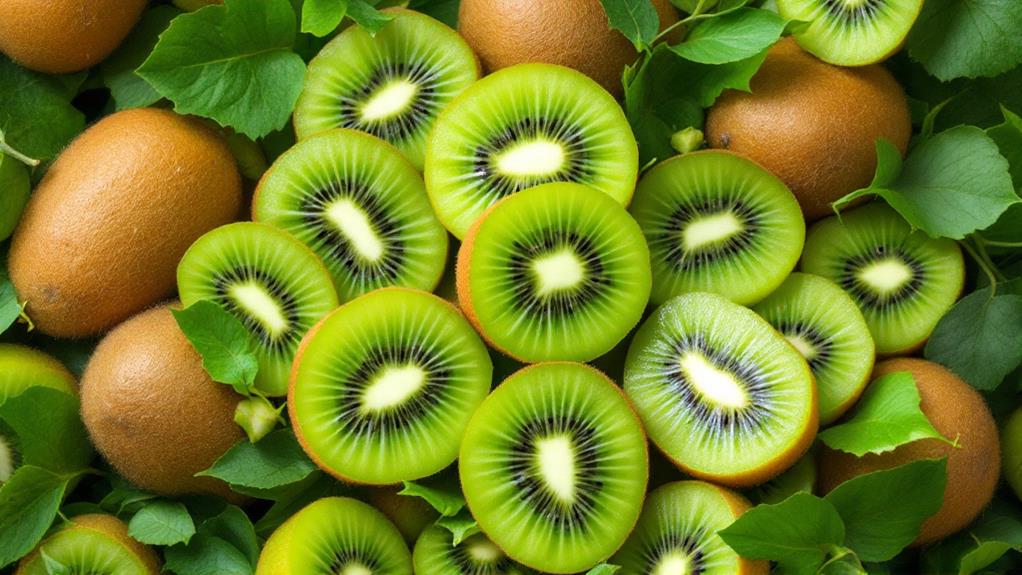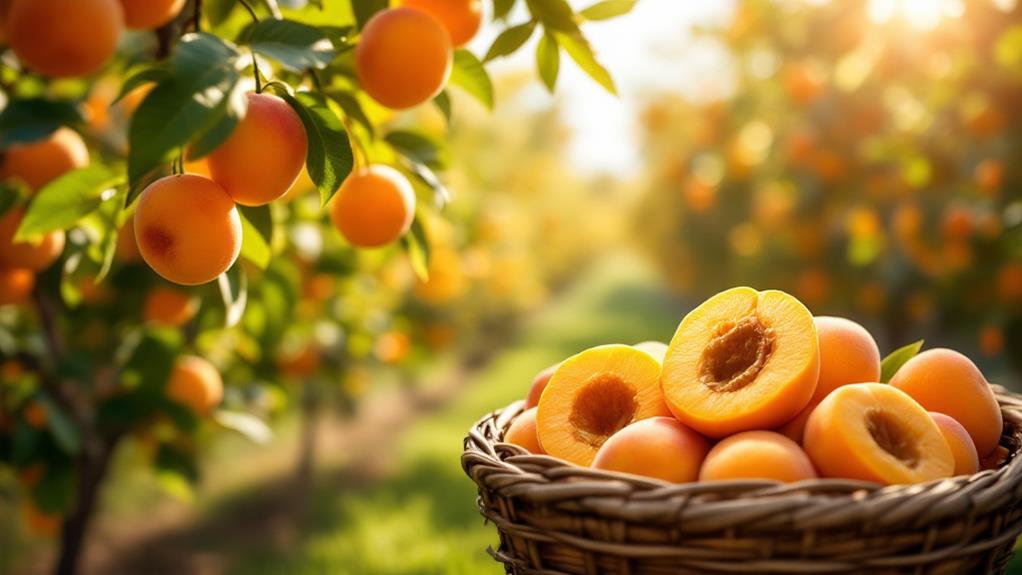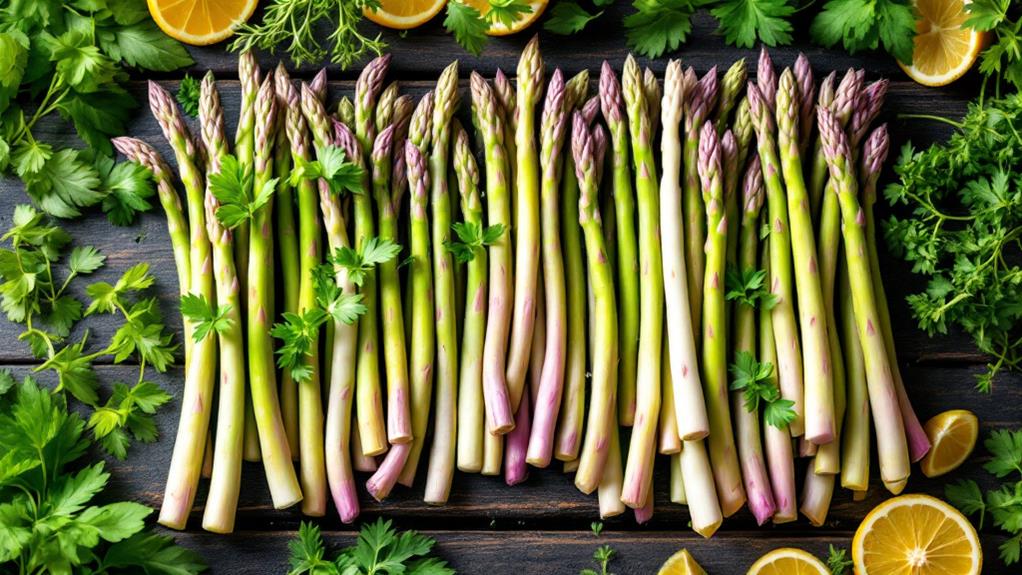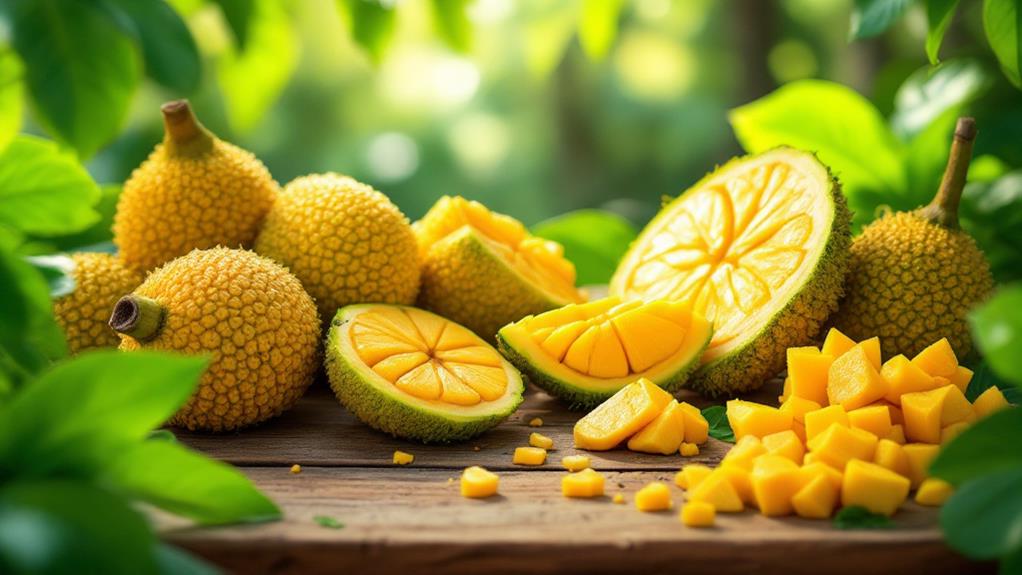What Is Water Spinach and What Are Its Uses? A Complete Guide
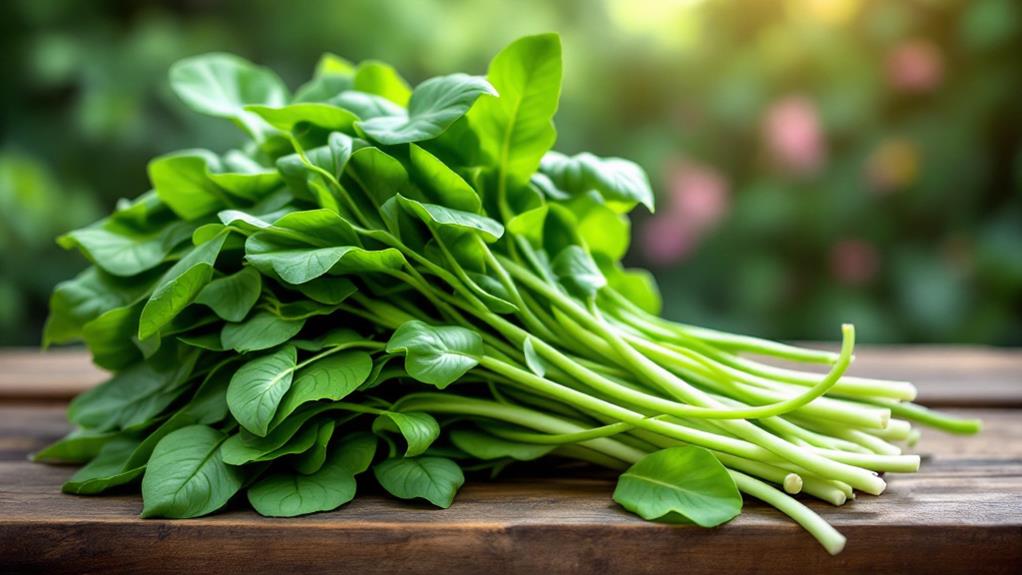
You're about to uncover that water spinach, or Ipomoea aquatica, is a leafy green native to Southeast Asia, thriving in its warm, wet environments. This plant, also dubbed kangkong or ong choy, grows rapidly and stands up to 3 meters tall. It's packed with vitamins A, C, and K, along with iron and calcium, making it a nutritional powerhouse. You'll often find it in stir-fries, soups, and salads due to its mild, nutty taste. When selecting, opt for colorful, unwilted stems. Proper storage in the fridge guarantees freshness. Keep exploring to understand more about its cultivation and varieties.
Understanding Water Spinach
Regarding understanding water spinach, you'll find this remarkable plant, scientifically known as Ipomoea aquatica, thriving in the wetlands of Southeast Asia. This resilient, semi-aquatic plant is native to the region, favoring moist, tropical soils where it grows rapidly. Its hollow stems and leafy greens make it a staple in numerous Asian cuisines, offering both versatility and nutritional value.
Water spinach, or kangkong as it's known in Indonesia and rau muong in Vietnam, can grow over 2-3 meters tall, with a daily growth rate of about 10 cm. This fast growth is facilitated by its ability to thrive in an aquatic environment, along with when growing in soil. Its rich green leaves are not just a culinary delight but a powerhouse of nutrition. Packed with vitamins A, C, and B, along with vital minerals like iron, calcium, and magnesium, water spinach is a fantastic addition to a healthy diet.
In the kitchen, you'll see water spinach featured prominently in stir-fries, soups, and salads. Cooking boosts its flavor and guarantees safety, making it a beloved component of dishes across Southeast Asia.
Origins and Varieties
Water spinach, a staple in Southeast Asian cuisine, has deep roots in the region's agricultural history. Native to Southeast Asia, this leafy vegetable thrives in moist soils, making flooded rice fields and waterways its natural habitat. You might be surprised to learn that water spinach has been a part of Asian agriculture since the Chin Dynasty, highlighting its longstanding cultural significance. The plant is also adaptable, with different names across several cultures like ong choy, kangkong, and rau muong.
When it comes to types, water spinach has two main kinds: Ching Quat and Pak Quat. Ching Quat, with its green stem and white flowers, offers distinct features and culinary uses. On the other hand, Pak Quat showcases a white stem and pink flowers. These varieties allow for numerous uses in dishes, enriching your culinary experience with unique textures and flavors.
- Ching Quat: Green stem, white flowers
- Pak Quat: White stem, pink flowers
- Moist Soils: Ideal for growth in flooded fields
However, water spinach's aggressive growth classifies it as a noxious weed in some regions, particularly in the United States, affecting its cultivation and distribution.
Nutritional Benefits
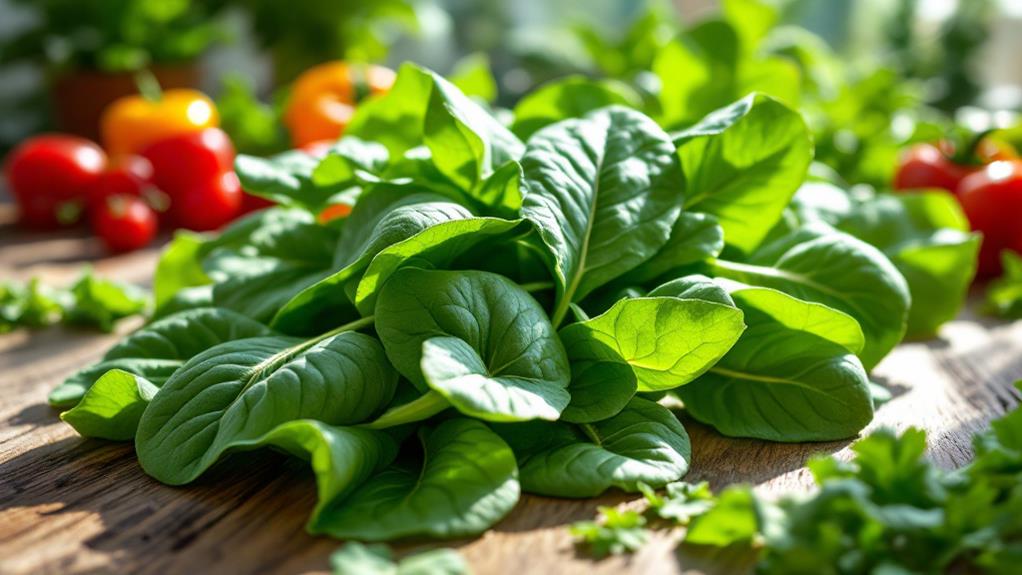
Rich in essential nutrients, water spinach offers a wealth of health benefits that you won't want to miss. Packed with crucial vitamins like A, C, and K, this green powerhouse supports your immune function and promotes glowing skin. Including water spinach in your diet guarantees you're getting these key vitamins, which are significant for overall health.
But it's not just about vitamins; water spinach is also loaded with important minerals. Iron, calcium, magnesium, and potassium are all present in this leafy vegetable, contributing to strong bones and maintaining proper fluid balance in your body. These minerals play a vital role in keeping you healthy and energized.
Another advantage of water spinach is its high dietary fiber content. This not only aids in digestion but also helps maintain regularity, supporting your digestive health. Plus, being low in calories makes water spinach a perfect supplement to any weight management plan, providing nutritional benefits without packing on the pounds.
Furthermore, its antioxidant properties help combat oxidative stress and reduce inflammation, potentially lowering your risk of chronic diseases. Incorporating water spinach into your meals can be a delicious way to enhance your health and enjoy its many nutritional benefits.
Cultivation Techniques
Exploring the nutritional benefits of water spinach naturally leads us to contemplate how best to cultivate this nutritious vegetable. Growing water spinach successfully involves understanding the specific needs of the plant. Initially, focus on the ideal growing environment. Water spinach varieties thrive in nutrient-rich soils with consistent moisture, making them perfect for waterlogged areas or raised beds. Make sure the best growth temperature is maintained between 75°F and 85°F, as temperatures below 50°F can cause chilling injury.
To get started, you can sow seeds indoors year-round or outdoors from late February to early March. The plants have a growth period of about 60 days until maturity, so plan accordingly. Regular fertilization is essential. Use nitrogen-rich liquid fertilizers every two weeks to guarantee healthy growth and rapid regrowth after harvesting.
Hydroponic systems are another effective method for cultivating water spinach. They allow you to maintain moisture levels efficiently while providing support with wire mesh or clay pebbles. Here's a quick summary:
- Best Conditions: Warm, frost-free environments with temperatures of 75°F-85°F.
- Soil Requirements: Moist, nutrient-rich soils or hydroponic setups.
- Fertilization Routine: Apply nitrogen-rich fertilizers biweekly.
These techniques will guarantee a bountiful harvest of water spinach.
Selecting and Storing
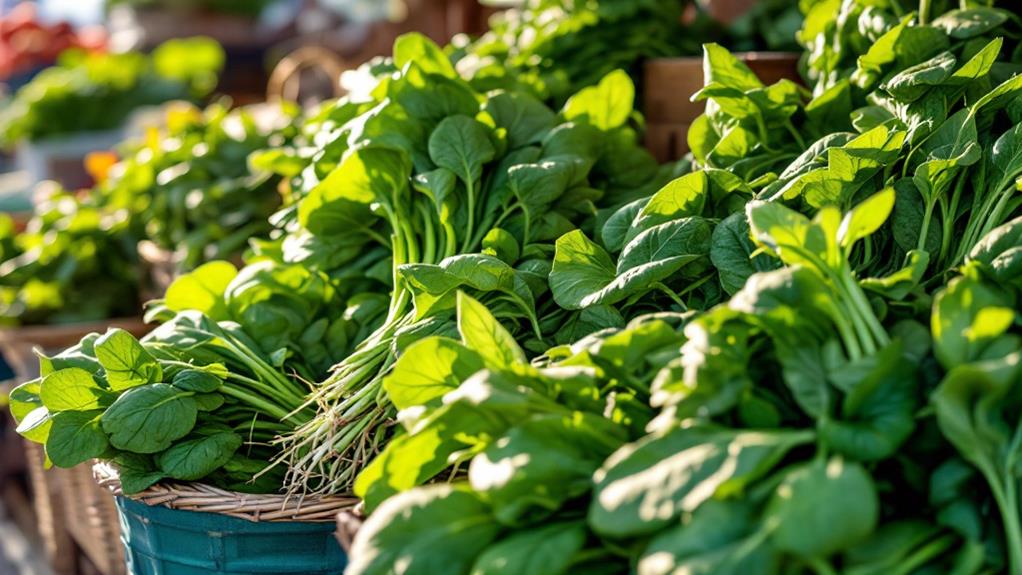
When selecting water spinach, always aim for long, straight stalks, as these indicate tenderness and crispness. Lively green leaves are a must, so steer clear of any that are wilting or yellowing. These signs guarantee the water spinach you choose is fresh and packed with nutritional value. Selecting the best bunch not only improves your dish but also optimizes the benefits you get from this nutritious vegetable.
Once you've picked the perfect bunch, storing it correctly is key to maintaining its freshness. Wrap your water spinach in moist paper towels, then place it in a ziplock bag. This method helps retain moisture and keeps the leaves from drying out. Store it in the crisper section of your refrigerator, where the cool temperature helps preserve it for a few days.
Keep an eye out for signs of spoilage, like discoloration, mold, a slimy texture, or a sour odor. These indicate the water spinach is no longer safe to eat. For the best taste and nutritional value, aim to consume it within 1-3 days of purchase. Proper selection and storage guarantee you enjoy this fresh, flavorful vegetable at its peak.
Culinary Applications
In the world of Asian cuisines, water spinach stands out for its adaptability and flavor. This versatile green is a staple in many culinary applications, such as stir-fries, soups, and salads. Its mild, nutty flavor makes it a delightful enhancement to your dishes, elevating the overall taste without overpowering other ingredients. You can easily incorporate water spinach into your meals by sautéing it with garlic and chili, steaming it, or adding it to curries and stews.
When you're planning your meals, consider how well water spinach pairs with different meats and seafood. Its crisp texture and nutritional benefits make it an excellent complement to proteins, adding a rejuvenating green element to your plate. To get the best out of water spinach, it's recommended to consume it fresh within 1-3 days of purchase. This guarantees you retain its texture and nutritional value.
Here are some ideas for using water spinach in your kitchen:
- Stir-fry it with garlic and tofu for a quick and flavorful side dish.
- Add it to a seafood soup for an extra lift of nutrients.
- Toss it into a fresh salad with a light dressing.

